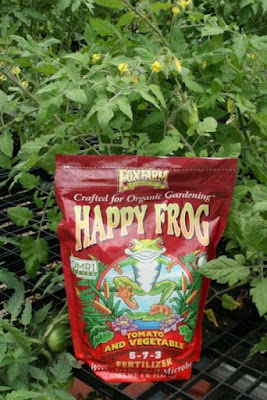Each month the garden brings its own set of tasks and June is no exception. On June 20, the summer solstice arrives and as the days get longer and temperatures rise, your garden is going to need your attention to ensure it has what it needs to achieve its highest potential. This includes ensuring your plants receive the right nutrition and hydration, while keeping up with the weeds, pests, harvesting, pruning and yes - planting.
Optimal nutrition is achieved by choosing and adding the right fertilizer for the crops you’re growing. Every garden fertilizer lists the three major ingredients on the front of the container, in this order: Nitrogen, Phosphate and Potash. The first number on the label is always Nitrogen. Nitrogen promotes plant growth. The second number is Phosphate. Phosphate plays a major role in rooting and blooming. The third number is Potassium, which plays a key role in overall plant development.
All three numbers are important and using a fertilizer designed for the plants you are growing will give you the best results. Tomatoes, peppers and other fruiting crops need fertilizers with a high middle number to promote rooting and blooming, such as 5-7-3 or 4-5-6. The presence of an OMRI seal on the package is your assurance the product has been certified organic according to the Organic Material Review Board.
Beyond basic ingredients, fertilizer effectiveness is determined by several factors, including soil pH, soil structure soil microbiome. If you have questions, stop in and let’s have a conversation about which fertilizer is best for your vegetable garden.
When it comes to hydration, avoid overhead watering and deliver water to the root zone. An easy way to accomplish this is to build a moat around the plant and water the moat with a hose-end attachment. Soaker hoses also help ensure that the water you apply to your garden is being used by your plants and not lost to evaporation.
A 6-8″ layer of organic mulch can optimize water by blocking thirsty weeds and reducing evaporation. Organic mulches retain some water themselves and increase the humidity level around plants. Soil Pep is a good choice for mulch as well as soil improvement.
While you’re tending your warm weather crops, don’t forget to harvest the lettuce, spinach and other cool season crops as they ripen.
Yes, you can still plant. Tomatoes, (pepper) other crops that didn’t survive the spring can be replaced now with healthy transplants. From seed, you can plant beets, radishes, carrots. For shrubs and perennials that didn’t make it through the winter, dig them up and replace them.
Weeds are very opportunistic, seemingly springing up overnight. They're often hidden in amongst the rest of the garden, so you have to look carefully for them. It’s very important to keep them from going to seed. The same is true of insect pests and diseases. Knowing what you’re dealing with is the first step to effective control. Bring a sample of the problem to our Diagnostic Center. We’ll identify it and recommend a solution.
As lilac and other spring bloomers finish flowering, it’s important to prune the spent blossoms off. The same is true of iris, before they go to seed. If you come across yellow foliage on spring flowering bulbs, cut it off.
Keep your Legendary Flower Bin Grown Hanging Baskets and other annuals blooming strong all season long with ferti-lome 20-20-20
Healthy plants need less water, fertilizer and pest control than stressed plants. By keeping on top of tasks — such as weeding, thinning, pruning and monitoring pests — your garden will be more productive this year.










No comments:
Post a Comment